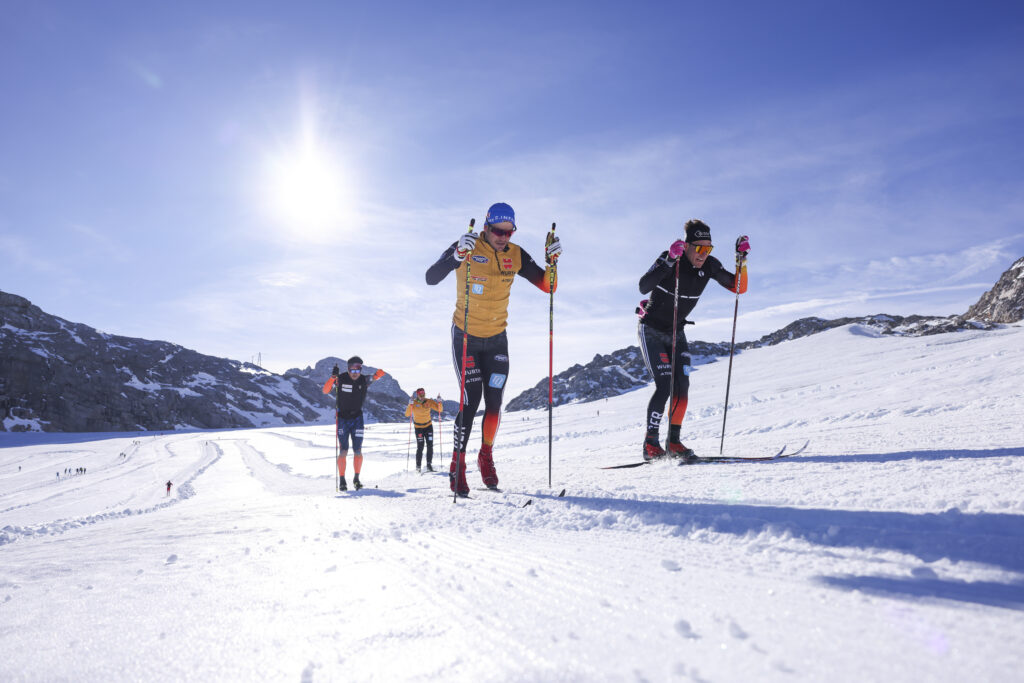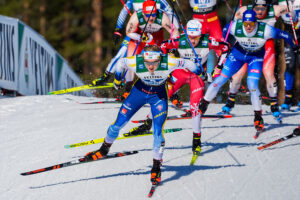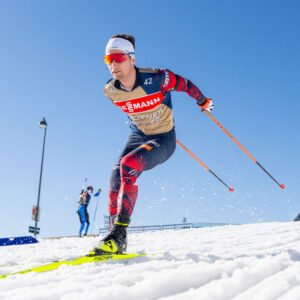Vitamin D and its impact on athletic performance
Autumn weather, rain, drizzle, cold, and limited sunlight — what does this mean not only for the general population but also for athletes? What do the latest scientific findings say about vitamin D?
The importance of vitamin D for human health is well known. It plays a role in calcium and phosphate metabolism and thus primarily affects the skeletal system.
Vitamin D was discovered in 1919 as the so-called antirachitic factor — a substance that prevents rickets. In nature, it exists in three forms: vitamin D1 (calciferol), found mainly in cod liver oil; vitamin D2 (ergocalciferol), of plant origin; and vitamin D3 (cholecalciferol), primarily of animal origin.
Intake of vitamin D
Thanks to evolution, the human body can produce vitamin D3 on its own — from cholesterol. It is synthesized in the skin from 7-dehydrocholesterol under ultraviolet (UVB) radiation and later activated in the liver and kidneys (though other tissues can also do this) through hydroxylation. The result is the active form of vitamin D3, called 1,25-dihydroxyvitamin D3 (or 1,25-dihydroxycholecalciferol).
Roughly 20% of our vitamin D intake should come from food. Its sources include both animal (cholecalciferol) and plant (ergocalciferol) origins.
It is estimated that dietary intake provides only about 50% of the recommended daily amount. Vitamin D is the most deficient vitamin in the modern food chain. Likewise, low concentrations in the blood (vitamin D deficiency is defined as serum levels below 20 ng/dL or 50 nmol/L, while concentrations between 50–75 nmol/L indicate insufficiency) are among the most common deficiencies in the general population — according to some studies, up to 50% of people have suboptimal vitamin D levels.
Our understanding of vitamin D’s role was revolutionized around the turn of the millennium. Although the nuclear vitamin D receptor was discovered in 1969, the key cellular mechanisms of vitamin D’s action were not fully understood until roughly 30 years later. Since then, vitamin D has been recognized as a true endocrine (hormonal) substance with numerous systemic effects — influencing obesity, high blood pressure, diabetes, metabolic syndrome, certain cancers, and autoimmune diseases.
Influence on performance
Beyond these effects, vitamin D also appears to have significant importance for athletic performance. Surprisingly, the first published data on the effects of sun exposure (and thus vitamin D synthesis) on physical performance date back to 1927 (German swimmers) and 1938 (Russian sprinters).
Today we know that vitamin D affects the function of more than 2,000 genes — about one-tenth of the entire human genome — that play roles in cell growth, tissue regeneration, immune regulation, muscle metabolism, and protein synthesis.
Although the amount of solid data on vitamin D’s effect on physical performance remains limited, most experts agree it has an impact. Clear ergogenic (performance-enhancing) effects have been described in sprinters. It also plays a role in muscle and bone recovery after sports injuries and is considered important in fatigue syndromes and overtraining.
Vitamin D supplementation is recommended for elite athletes who struggle to maintain race weight. Low vitamin D levels are also a component of the Female Athlete Triad — a syndrome consisting of disordered eating, menstrual irregularities, and bone disease. This condition is often overlooked in Czech elite sports but can have serious health consequences for top female athletes.
Recommended daily intake
As mentioned above, a large portion of the general population — including many elite athletes — has low vitamin D levels. Numerous studies have confirmed this across various sports, even in countries near the equator. The main reason is excessive sun protection, which reduces vitamin D synthesis in the skin.
The recommended daily intake of vitamin D for the general adult population varies by country (see table) but averages around 10 μg (400 IU) per day.
| Country / Region | Vitamin D (IU) | Vitamin D (µg) |
| USA and Canada | 600 | 15 |
| United Kingdom | 400 | 10 |
| Scandinavia | 300 | 7.5 |
| Australia / New Zealand | 200 | 5 |
| WHO (World Health Organization) | 200 | 5 |
For individuals with low blood vitamin D levels, an intake of 800–1000 IU (20–25 μg) per day is recommended. For elite athletes with low levels, 1500–2000 IU per day is suggested. However, recommendations vary, and some experts are stricter.
At the American College of Sports Medicine (ACSM) conference in Denver, experts stated that athletes with vitamin D levels below 75 nmol/L (see reference table below) should take 2000–4000 IU daily. According to these stricter guidelines, athletes without regular sun exposure — particularly during winter months in regions above 35° latitude (which unfortunately includes the Czech Republic) — should take 1000–2000 IU daily as prevention.
It is also important that the supplement comes from a reliable manufacturer, as many dietary supplements on the market — not only for athletes — have questionable quality.
Monitoring vitamin D levels
According to the latest recommendations, vitamin D levels should be checked every 4–6 weeks, which is practically unrealistic. The test costs around 1,700 CZK (about 70 EUR), making frequent testing unaffordable for most athletes or sports doctors.
It is recommended to measure total 25 OH-vitamin D (a test commonly available in larger laboratories). Ideally, however, free 25OH-vitamin D should be measured — though this is not routinely available.
| Status | 25(OH)D (nmol/L) | 25(OH)D (µg/L) |
| Severe deficiency | < 12 | < 4.8 |
| Deficiency | 12 – < 30 | 4.8 – < 12 |
| Inadequate | 30 – 50 / 80 | 12 – 20 / 32 |
| Adequate | > 50 / 80 | > 20 / 32 |
| Optimal* | 100 – 250 | 40 – 100 |
| Optimal** | 120 – 225 | 48 – 90 |
| Dangerous | > 375 | > 150 |
* Zittermann A. Vitamin D in preventive medicine: are we ignoring the evidence? Br. J. Nutr 2003;89:552–572.
** Heaney RP. Assessing vitamin D status. Curr Opin Clin Nutr Metab Care 2011;14:440–444.
Every athlete should pay careful attention to eating foods rich in vitamin D and should not hesitate to use supplements (such as fish oil capsules) if blood concentrations are low.
Where can we find vitamin D?
The main sources include fatty sea fish, egg yolks, cocoa, margarines (ordinary butter contains five times less vitamin D than margarine), mushrooms, and fortified foods.
In the Czech Republic, fortified products are limited — mainly plant-based milks (rice, soy, almond, etc.) and their derivatives. Abroad, vitamin D fortification is common in cereals, baked goods, and orange juice. In the Czech market, such options remain scarce.
It’s also important to note that fortified foods often contain less vitamin D than claimed — typically under 80% of the declared value — and one study even found that 14% of such products contained no vitamin D at all.
In conclusion
Vitamin D testing should be part of routine screening for elite athletes, ideally twice a year (winter and summer). Every athlete should ensure a sufficient intake of vitamin D–rich foods and, if blood levels are low, should supplement appropriately.
The author of this article is leading Czech hepatologist Prof. MUDr. Libor Vítek, PhD, MBA.
This article has been updated. It was first published on bezky.net in March 2020.
Are you interested in training for long-distance skiing, traditional cross-country skiing, and biathlon? Click HERE and read more about it.










